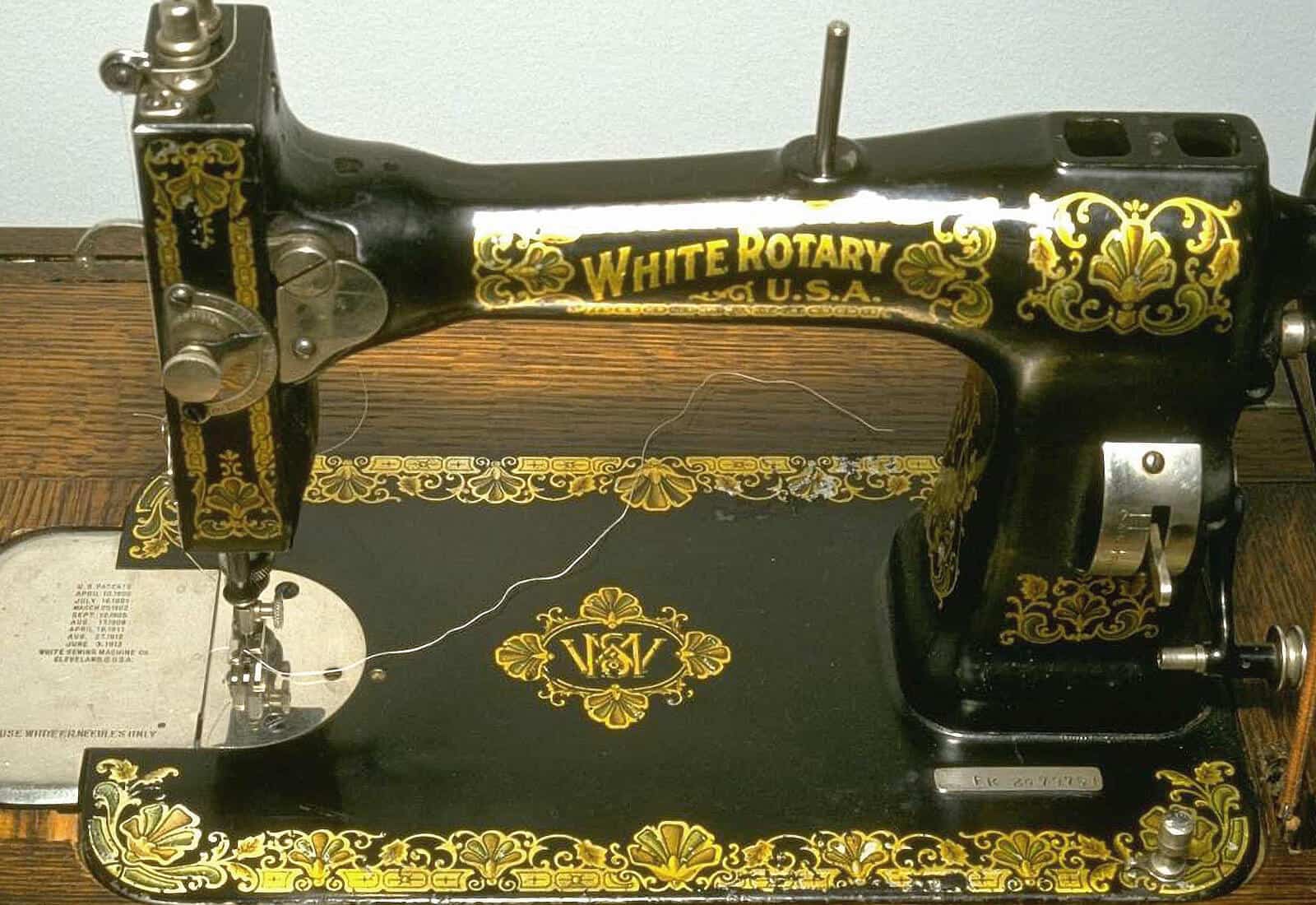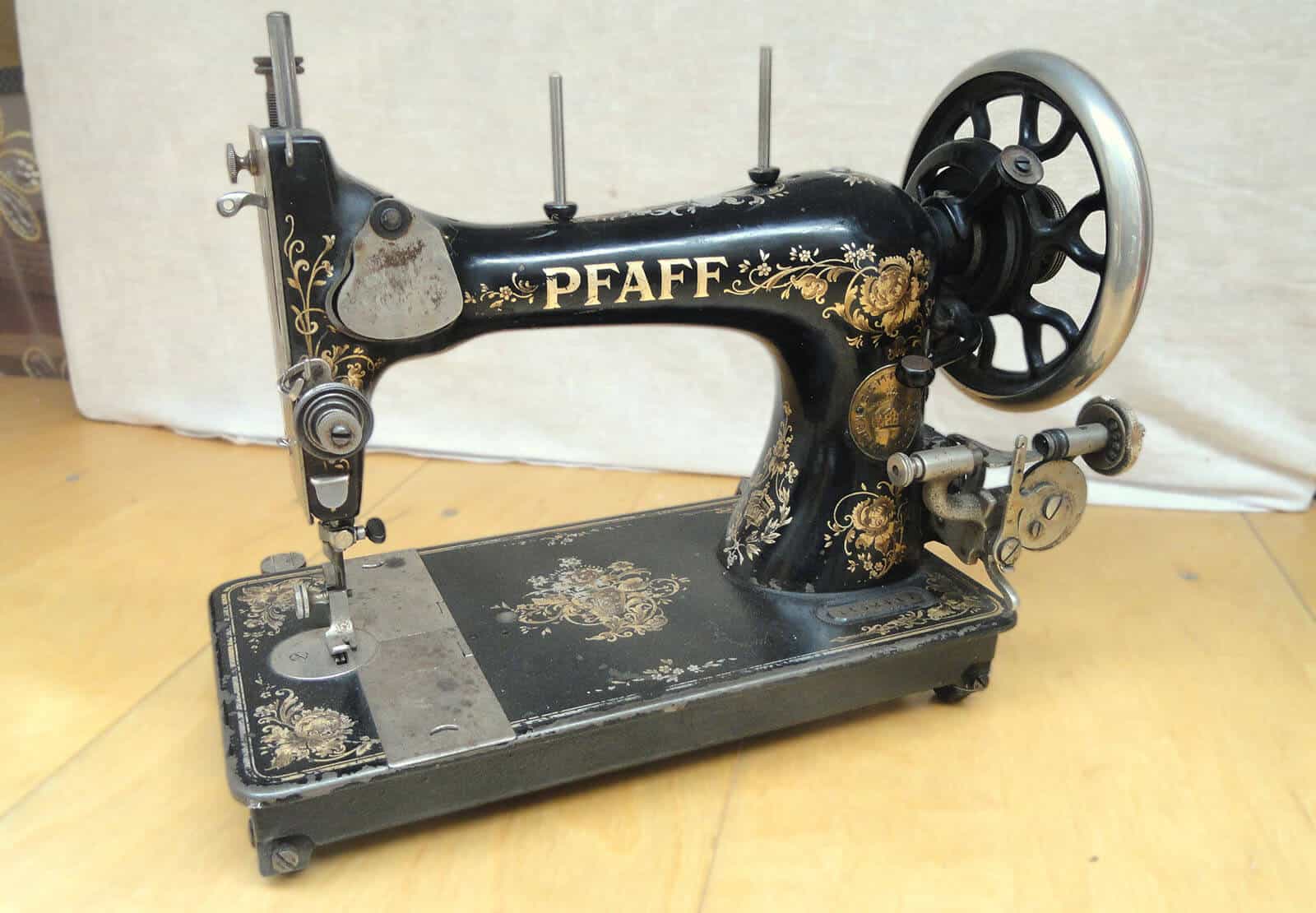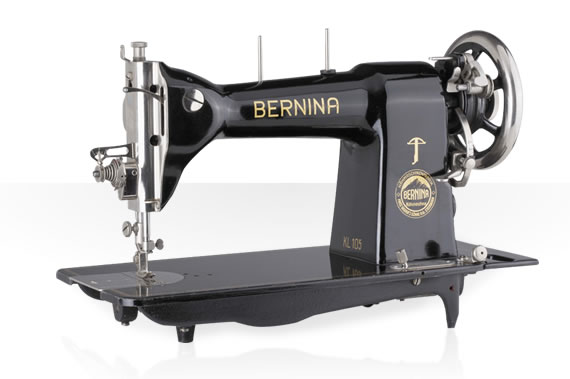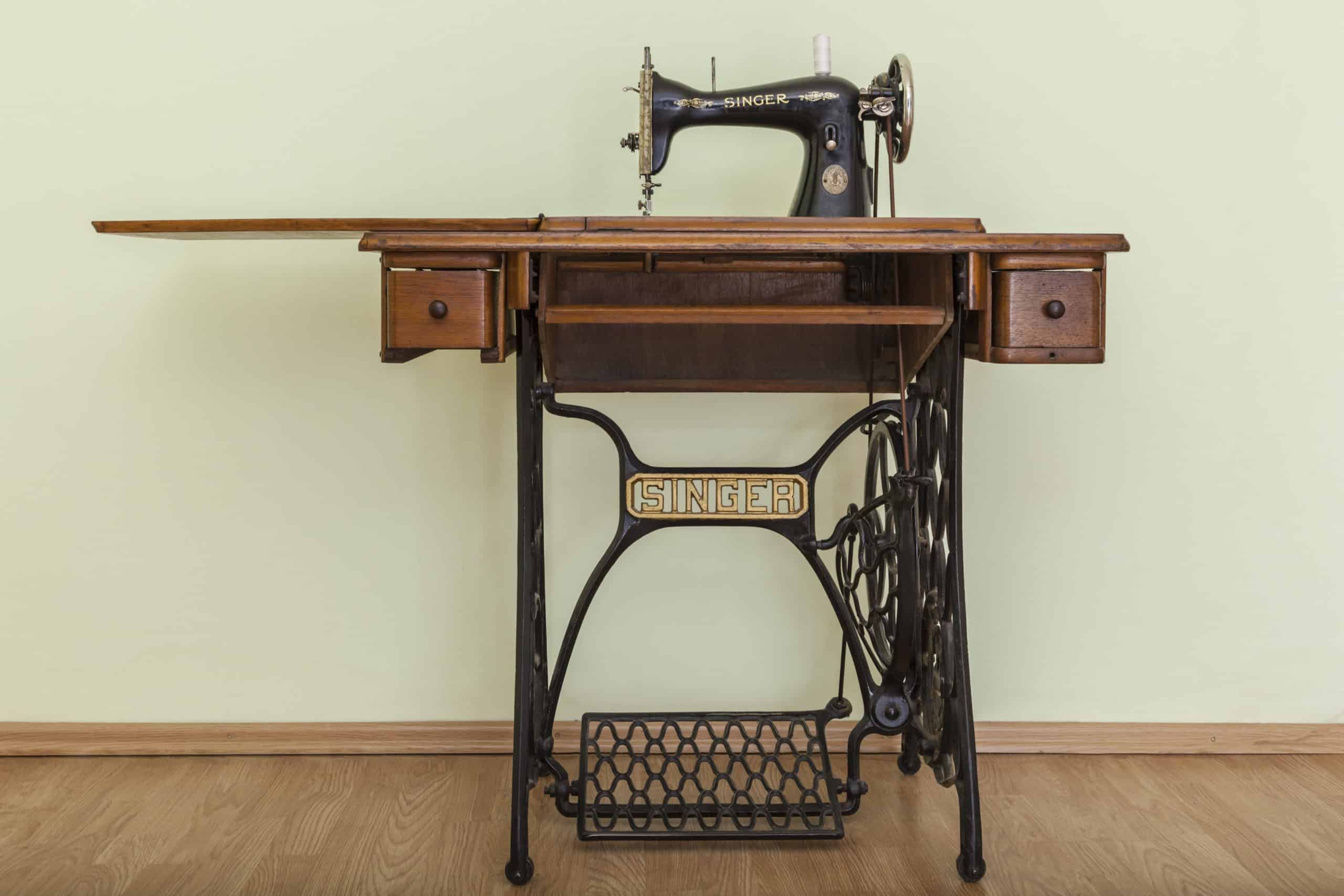Have you ever walked into a room in your grandma’s house and seen a large table with a weird-looking machine on it? If the answer is yes, it probably was a sewing machine table. If it also looked old, it’s more than likely an antique Singer sewing machine table.
Singer is one of the household names when it comes to sewing machines, as they’ve made them for over 150 years. After all those years of production, some models are very rare and, thus, highly collectible.
So, is there a chance that your antique Singer sewing machine table could be valuable? Keep on reading to learn more about the Singer’s history, how to determine the value of its machines and what to do if you have one lying around.
Table of Contents
History of Antique Singer Sewing Machine Tables
In 1851, Isaac M. Singer founded Singer in Boston but later moved production to New York City.
Despite Singer arguably being the most well-known sewing machine brand, Isaac Singer wasn’t the inventor of the sewing machine. However, its reliability and constant innovations have made Singer almost the default option for sewing machines.
During its early years, Singer did not build its own cabinets. Therefore, in 1864, Singer approached furniture manufacturers in South Bend, Indiana, with a deal to produce its furniture including its tables.
These manufacturers initially disagreed, but eventually, Singer (now named Singer Manufacturing Company) built its own cabinet factory in South Bend around 1868.
What made Singer stand out and gain so much popularity was how it marketed its products. Through clever advertising, it manifested the need for every household to own a sewing machine. Additionally, Singer came up with an installment plan to make its machines more attainable to the average family.
Finally, Singer constantly strived to produce innovative, accessible, and compact machines. This would keep its loyal customers hooked, as they would want to own the latest and greatest from Singer.
Manufacturers of Antique Singer Sewing Machine Table
As the name suggests, an antique Singer sewing machine table is made from Singer. But, there are also other manufacturers of sewing machines and tables. Here are some of the most popular ones:
Singer
We have to start with the king of sewing machines. As we mentioned above, Singer is the most popular sewing machine brand. It has sold the most sewing machines since its establishment in the mid-1800s. This fact is one of the biggest benefits for people looking for an old sewing machine table.
With so many pieces sold, it’ll be easy to find the exact one you want. Their prices are also affordable with most models costing up to a few hundred dollars, apart from a few rare ones.
Moreover, you’ll find plenty of spare parts if you need to do any repairs or tweaks to your machine. Finally, the large community of sewing machine enthusiasts will provide you with all the info you might need, as they are very familiar with Singer and its products.
White

Although not as popular as Singer, White was still the primary competitor to Singer, during the early 20th century. In fact, up until the 1950s, White was the sole provider of sewing machines for Sears. Unfortunately, White is no longer in operation, as Electrolux purchased it in 1986.
White managed to compete with Singer because it targeted the entry-level market. White’s sewing machines were inferior to Singer’s, but they offered an affordable alternative to the more expensive options from Singer.
But, one thing that White had was beautiful furniture. The brand marketed its meticulously crafted wooden tables as its main selling point. That’s why if you’re looking for a beautiful antique sewing table, you should look for ones by White.
Pfaff

Pfaff is one of the few successful European sewing machine brands. It was established in Kaiserslautern, Germany, in 1862. The brand’s success is due to its high quality and reliability.
Nowadays, the brand is no longer independent, as it is a part of the Husqvarna Viking brand. However, it still maintains its stature as a top sewing machine brand.
You can easily find some of the most popular models of Pfaff, like the 130, for up to a few hundred dollars. If you can find one with the sewing table, you’ll get a more complete piece for a small additional amount of money.
Bernina

Another European giant, Bernina has been making sewing machines since 1893. The brand originates from Steckborn, Switzerland, and is one of the very few brands that is still family-owned. Bernina has transferred part of its production to Thailand to save on production costs.
If you’re a sewing machine enthusiast, then you know that Bernina makes some of the best sewing machines and cabinets. The brand has maintained its exceptional quality since its early days.
If you want to invest in a vintage sewing machine from Bernina, you’ll probably have to spend big, as some models can reach upwards of a thousand dollars. And that’s only for the machine. If you want the complete set with the sewing table, you’ll need much more.
How Do I Know if My Singer Sewing Machine Is Antique?
We usually use the terms “antique” and “vintage” interchangeably to describe items created long ago. However, there is a defined line before which an item can be called an antique. In general, an item is considered antique if it was created over 100 years ago.
When it comes to sewing machines though, including those by the Singer Company, these terms vary slightly. A sewing machine would be an antique if it was built before 1900, whereas it is considered vintage if it was built between 1900 and 1970. After the 1980s, some brands began to include electronic components in their sewing machines.
How Can I Tell How Old My Singer Sewing Machine Is?
There are usually several ways to roughly determine the age of your sewing machine. For example, if it’s a treadle sewing machine, then it wasn’t made recently. With Singer sewing machines, in particular, it’s effortless to find out how old yours is.
The first thing you have to do is find the model number and the serial number of your sewing machine. Depending on its era, it could be in several different places. Some places to look at are the front panel, below the handwheel, on a small metal plate in front of the machine, or below the controller for the stitch length.
Once you have located your numbers, you can simply Google the machine’s model number and find its age immediately. Or, you can input your serial number on Singer’s website, where you’ll find all the information you need, plus the machine’s manual.
Another option is to utilize the International Sewing Machine Collectors Society database. This database is complete with all serial numbers of every Singer sewing machine created for easy access to the public.
Are Antique Sewing Machines Worth Anything?
The short answer is yes. If you have an antique sewing machine lying around, it probably has some value for sewing enthusiasts and collectors. So, the question becomes how to find the value of your antique sewing machine.
You should remember that older machines, like Singer treadle sewing machines, come with additional components such as a sewing table and a pedal. As technology advanced, these treadle machines were not as helpful. Therefore, it’s not unusual to find antique sewing machines in pieces, with the tables or the legs sold separately.
Depending on the condition of an antique sewing machine table, it can potentially fetch a high price. An antique Singer sewing machine table might not be very valuable, as these tables weren’t very crafty. Nevertheless, a well-made table with a lovely wood veneer in excellent condition can reach a few hundred dollars.
Similarly, the cast iron base legs used to stabilize the sewing machine can be valuable. The most important thing about these is to make sure they are not rusty, as cast iron tends to rust quickly.
When it comes to the machine itself, there are plenty of factors to consider to fully determine its value:
Condition
Arguably the most critical factor that will determine your machine’s value. The main points that define the condition of a sewing machine are its functionality, its appearance, and whether it is complete with accessories or not. These are the categories that describe the condition of antique sewing machines:
- Excellent: A fully functional machine that may have a few small scratches or blemishes. All of its metal components look new and shiny, with all its decals also unscathed.
- Very Good: Very close to excellent condition, but shows some signs of use. Can have up to medium-sized scratches or needle marks, but it mustn’t be rusted at all.
- Good: In a good condition machine, all major parts must be present and fully functional. Some minor parts or accessories can be missing or rusted. Many antique Singer machines have this condition.
- Fair: A functional machine that has significant damage to its appearance, with several accessories missing. Ideal for a restoration project.
- Poor: A non-functional and unrepairable machine that can only be used for parts.
Location
The item’s location is crucial in the case of sewing machines because they can be tough and expensive to ship. This means that different sewing machines may be more prevalent in certain areas.
You should visit some local sellers or collectors of antique sewing machines to determine if your vintage sewing machine is in high demand. This may get you some extra money or save you the trouble of trying to sell your machine without success.
Historical Value
Most household antique sewing machines will not have any historical value. The ones that have historical significance are usually kept in sewing museums.
There’s also a chance you might have a sewing machine used by a prevalent historical figure. Although it’s a slim chance, you’ll probably make several thousands of dollars if you end up having one.
Popularity
Not all antique sewing machines will be popular among collectors. In order to be popular, a machine needs to originate from a specific era or have a standout feature, like its design or a unique color.
Collectors crave certain Singer sewing machine models. These include the first few treadle models, the 221 and 222 Featherweight, and the “Blackside”.
The last one is particularly unique because it was in production during World War II when there was an increased demand for chrome. This made Singer change the material of several of its components to black metal.
Another popular machine is a 1920 Singer sewing machine which can cost up to a few hundred dollars if it’s in excellent condition. Most likely though, it will show some wear and tear, and you’ll only be able to get about $100 for it.
Here are some of the most important models of Singer sewing machines, that are popular among collectors:
- The Turtleback
The Turtleback holds a very special place in collectors’ hearts, as it was the first Singer sewing machine for domestic use. That’s why it’s so popular even today, despite its flaws. The Turtleback was sold in 1856 and was the first to feature an iron treadle.
- The Fiddlebase
With the Fiddlebase, also known as the Singer 12, came Singer’s first of many innovations in sewing machines. The Fiddlebase was the first reliable lockstitch sewing machine and was so powerful that it could sew through several layers of fabric.
This technical breakthrough took the world by storm, which meant that thousands of Fiddlebases were sold up until the early 19th century.
Its wide availability and importance make it highly sought after. If you’re lucky enough, you may even find one in working condition, as they were made to last for a long time.
- The Featherweight
By far one of the most popular Singer models among collectors, this vintage Singer sewing machine was a huge success during the early 20th century. As the name suggests, the Featherweight was extremely light for its time, weighing 11 pounds.
This low weight was due to its cast aluminum construction rather than cast steel used in older models. Another technical innovation the Featherweight had was a bed extension that you could flip up and obtain easy access to a bobbin case.
Singer released the Featherweight in 1933 under the official name Model 221. Right after its immense success, the brand released an updated version -the 222K- which was essentially the same machine, but it came from its factory in Scotland.
To this day, professionals love Featherweights for their ability to easily sew through tougher and thicker fabrics, unlike modern machines. Their functionality and collectibility make these machines very valuable.
- The Slant-O-Matic
Two of the more modern -but still considered vintage- models are the 401a and 403a, also known as the Slant-O-Matic, which were made during the 1950s. The popularity of these models comes down to the fact that they had a build of solid steel and could stitch in a zigzag pattern.
These models featured an angled needle that allowed the user to easily access the presser foot and needle plate. They also utilized cams, which were internal discs that would redirect the presser foot and needle to create other stitching patterns.
The 401a and 403a are excellent options if you’re looking for a vintage sewing machine that is still relevant. These machines were built to last with high-quality components. This means that you can actually use them for sewing and not just have them on your shelf.
Where to Sell and Buy Antique Singer Sewing Machine Table?
Now that we’ve established the basics of determining the value of your antique sewing machine, let’s see where you can sell it or buy one if you’re interested.
The easiest and most efficient way to sell your antique Singer sewing machine table or the machine itself is to take it to an antique store. The owner will examine your machine to determine its age and condition and will make you an offer. It might not be the maximum amount you can get for it, but it can save you a lot of hassle.
Alternatively, you can try to sell it online. Use sites like eBay, Craigslist, or Etsy to list your item for auction or outright purchase. Also, consider if you’re willing to ship it to the buyer, or if you should only accept bids from people who are available for local pickup.
When buying antique sewing machines, you’ll probably find the widest variety online on the websites mentioned above. Make sure to differentiate between the terms vintage and antique though, as not all sellers use them correctly.
Finally, if you prefer to see the machine in person, you can head to local auctions, vintage stores, thrift stores, or even yard sales. There you might be able to find some hidden gems that people don’t know are valuable. Just make sure that it’s fully functional and comes with as many accessories as possible.
Final Thoughts
Even though we live in a world where it’s not common to sew your own clothes, some people still love these so-called relics of the past. If you want to start a collection of antique sewing machines, or simply want one for its vintage aesthetic, there are many options.
On the other hand, if you have an old sewing machine -especially one from Singer- you don’t use, why not sell it? These machines have somewhat of a cult following, and even the dullest and uninspiring machine can be worth a few hundred dollars.
